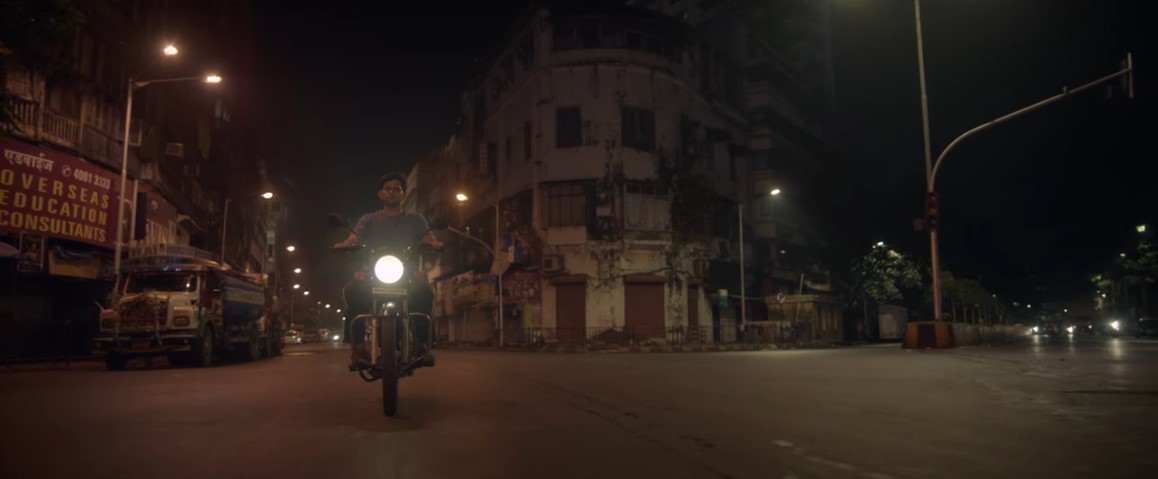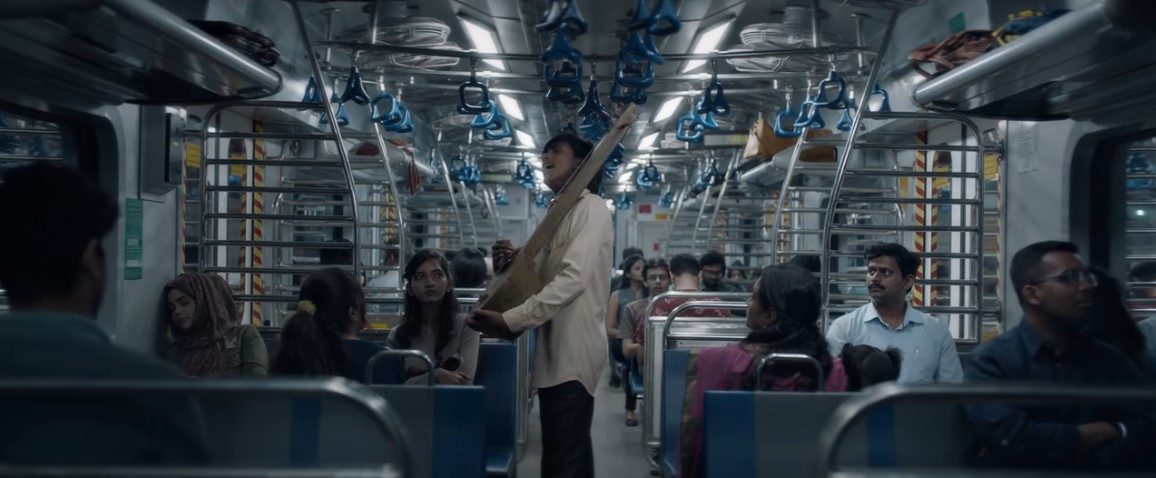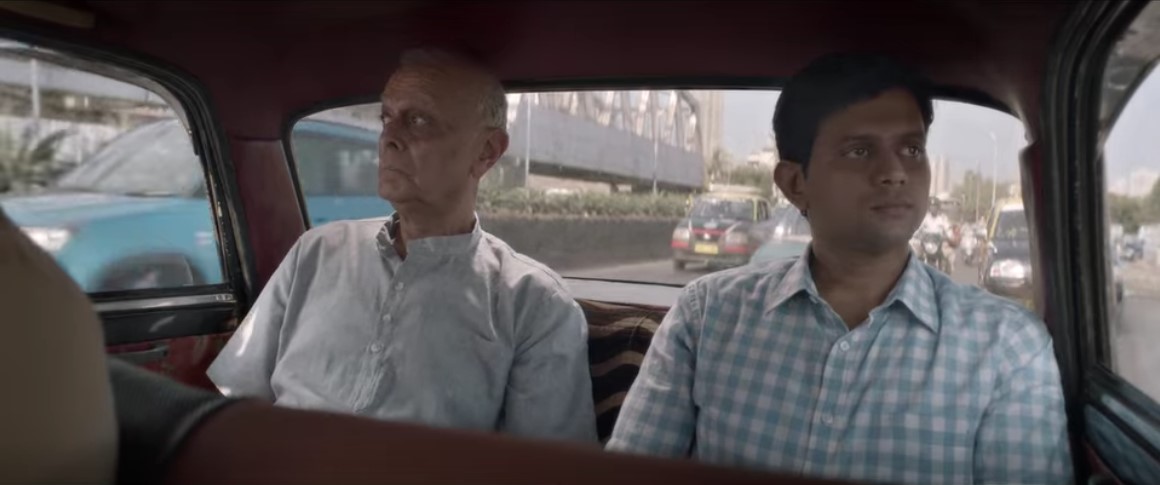Some films do not require further explanation, or should I say, any amount of explanation would fall short of the sheer density and profundity of the depiction of a life’s journey packed within a manageable duration of two hours as the film does. Marathi director Chaitanya Tamhane made himself known in Indian critics’ circles through the cinematic brilliance of ‘Court,’ and indie drama ‘The Disciple’ adds another feather in his cap. Meditative and brooding, with shining glimpses of spiritual and artistic clarity, the fundamentally humane saga explores the diversified music industry of contemporary India through the eyes of a skewed protagonist.
On the other hand, the film depicts a disciple’s journey to master his art, but artistic perfection eludes him as he gets caught up in a life of struggles, criticisms, greed, and impatience. The film conceals many of the director’s previous themes such as folk music, old age, and existentialism as it unravels itself as a lasting achievement in Indian cinema. The open-ended conclusion encourages the viewers to make their own journey towards meaning, and if you, like me, are left reminiscing the film long after it has ended, let us go hand in hand to meditate over the denouement. SPOILERS AHEAD.
The Disciple Plot Synopsis
The film begins with a poignant performance by veteran classical singer Vinayak Pradhan (Arun Dravid), while his students accompany him in instruments. We meet Vinayak’s protégé Sharad Nerulker (Aditya Modak) as he takes lessons from his guru and tends after him. Sharad prepares for a competition that is breathing on his neck. He goes on shopping to look presentable before the judges and rehearses with backing tracks, occasionally being interrupted by Ajji. At night, he trails along the emptied streets of the city on his bike, with the voice of an ascetic guiding him.

The ascetic, we are told, is Maai, a lesser-known genius trained in the Alwar Gharana of North Indian classical music. Sharad performs the Raag Bageshree considerably well on stage, but his name does not come among the top three performers. Accepting a setback, Sharad goes back to training. He also keeps himself busy with yoga sessions and making copies of rare records of classical maestros. But people only care for established names like Shankar Bhatt and Sultan Sahib, and their collectible gems do not sell well in a concert of famous percussionist Shakir Hussain. Sharad is eager to criticize the performance, lamenting how much his art has changed over the years. On his next training session, Sharad cannot perform well as he becomes repetitive in his choice of paths.
He revisits his childhood, where he is seen to be taking morning lessons from his father, who was also an acclaimed musician. Sharad makes advances towards another disciple, Sneha, and rejected by her, he resorts to porn. The crisis within him spreads roots as he underperforms on a concert of his guruji. He struggles to maintain his voice while his guru’s malady worsens. Sharad does everything in his power to achieve fame, taking part in a photoshoot, coming up with a savvy website, and rubbing elbows with organizers, but those endeavors do not necessarily better his skill. He gets caught up in a world of external stimuli and loses touch with his art. His sincerity does not compensate for his lack of inner peace, and in the end, becomes what he has feared the most – a mediocre book-publishing and socializing artist in a hoard of unsung geniuses.
The Disciple Ending: What Does The Final Scene Mean?
The penultimate shot captures the symmetry of the compartment of a moving train. Life, like the frame, strives to achieve symmetry in thought and action. The symmetry signifies perfection and divinity. Sharad returns from the book release event and the shadow of weariness looms over his face. In the meantime, a singing troubadour enters the scene. If you travel in India on a local train, you will often be arrested by these seemingly unrecognized masters of music. The boy holds what looks like an improvised tanpura, which he plays like a folk instrument, ridding it of classical embellishments.

He sings an old folk song, “Kuen Re Kinare,” and the heart-wrenching notes of his magical voice transport the audience to a mystic realm beyond consciousness. The cryptic lyrics of the Sufi ditty call to a seeker as it attempts to fathom a space beyond rationality, where fishes grow on trees. The “well” of the song signifies the uncharted depths of human consciousness. Sharad’s expressionless face does not give away much, but it is clear that he is captivated by the momentary glimpse of brilliance. The beggar’s performance is portrayed in sharp contrast to Sharad’s own musical thinking as well as the glamorous performance of reality-show contestant Shaswati Bose, both of whom seem to be guided by an external urge to achieve fame rather than their own internal “bhava” or the tranquil state of mind that culminates in “Rasa,” according to the traditional theory of performative art. To put it differently, while Sharad and Shaswati ostensibly give up their search for artistic truth to attain fame and stardom, the boy on the train is driven by the pure bliss and innocence that characterize his every note. Free-flowing and devoid of any prestigious lineage, his art seems pure and honest.
Who is Maai?
This question seems redundant but is important enough to ask since it directly relates to the final scene of the film. Guru Sindhubai Jadav, who is known by her ascetic name Maai, is an esoteric figure in Indian classical music shrouded by obscurity. Seemingly a lesser-known genius from the prestigious Alwar tradition, Maai is the guiding voice of Sharad’s life. His own guru Vinayak Pradhan has taken lessons from Maai, and Sharad listens to the rare lecture series of Maai for inspiration and guidance. The figure of Maai is that of a demigod carefully cultivated throughout the film, only to be shattered in the final moments of exposition.
While we never see the maestro at work, her character is built through others’ recollections and anecdotes. Sharad is increasingly angered by the critic’s scathing remarks, who say bitter things about Maai. According to the critic, Guru Sindhubai Jadav was apparently an islamophobic who denied singing any song composed by a Muslim. Sharad grows seemingly disillusioned and donates the lecture series that he held close to his heart to a music library. In the final sequence, we hear a blissful Sufi song from the ulatbaansi tradition, which is placed in sharp contrast to the purist ideals of Sharad’s musical predispositions which are endowed to him by the teachings of Maai. In the end, then, the prophetic genius of Maai is distilled down to insignificance.
What is the Cause of Sharad’s Relegation to Mediocrity?
It seems that Sharad is preoccupied with the idea of fame and success, and he perceives music as a means to an end. However, as preached by the prophetic voice of Maai, music is a means and an end by itself and does not require any external stimuli. In traditional rasa theory, bhava is the state of mind necessary to perform music. The mind has to be devoid of all thoughts to let the trails of a Raag enter the mind. The performance of Indian classical music, or any music for that matter, happens in a realm beyond self-consciousness as it seeks to communicate to the inner divinity. While Indian music is incomprehensibly diversified, there is a consensus across traditions that sees music as worship. However, Sharad deviates from his path when he desperately seeks to establish himself in the music scene.

His downfall begins with the setback that he receives from the competition at the beginning of the film. He gets demotivated and begins to doubt his art. His character also suffers from sexual frustration, greed, and jealousy, and when he sees his fellow disciple Sneha performing in America, he cannot stop himself from returning to his own performance video, which, to his dismay, is much less well-received. While there are other flaws in the character of Sharad, his relegation to mediocrity is seemingly caused by his capricious mind, as pointed out by his own guru. As a distressed Sharad leaves the stage in the middle of the performance towards the end of the film, we sense that he would not see the light of fame that he has rooted for all his life. In the end, then, Sharad is left to publish memoirs on his guru as he stays a lifelong disciple.
Is Vinayak Pradhan Dead?
Sharad’s guru Vinayak Pradhan is a dominating character that we are made familiar with from the very first shot. He is an artist who has devoted most of his life passing on his tradition to young students. Sharad takes care of his guru throughout the film, who is a salient figure in Sharad’s life. Towards the end, Vinayak’s ailment worsens and he struggles to make ends meet in abject poverty. The ending of the film is characterized by Vinayak’s absence. While his death is not shown in the film itself, it is perhaps implied by the publication of his memoir by Sharad. It can be assumed that Vinayak dies of natural causes due to his old age.
Read More: Best Indie Films From India


You must be logged in to post a comment.